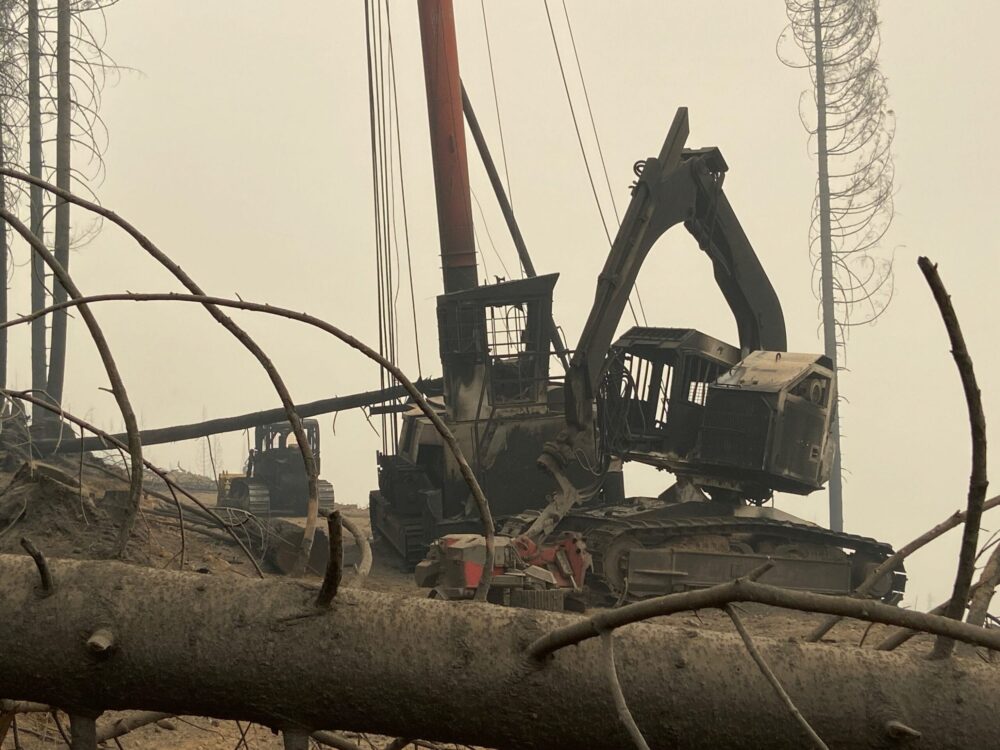Oregon is in big trouble – a direct result of an unprecedented wildfire crisis that is sweeping the western United States, posing an alarming and increasing risk to our state’s forests, rural communities and family-owned businesses.
Our 99-year-old family-owned company lost 75 million board feet of timber in last September’s Santiam Fire. Trees of varying ages that were planted on 6,000 acres of company-owned land north of our mills in Lyons, Oregon, went up in smoke.
Salvage logging and replanting began immediately. Last winter, we planted 456,000 new seedlings. Another three million will be planted this year and next.
However, last summer’s 402,274-acre Santiam Fire was far from the worst wildfire to burn on federal lands. By far the worst was northern California’s 1,032,648-acre August Complex. The lightning-caused, wind-driven fire blew 38 separate fires into one giant fire that raced across six counties and wasn’t contained until Nov. 11. It was twice the size of the 2002 Biscuit Fire, Oregon’s largest in modern history.

For perspective, we have to go back to 1910, the year the Big Burn destroyed three million acres in northern Idaho and western Montana, most of it in a 48-hour firestorm that leveled several towns. Eighty-six died, one more than the death toll in the 2018 Camp Fire, which destroyed Paradise, California.
Frankly, I think there is a Camp Fire in Oregon’s future. I also believe it will be much worse than the four Tillamook fires that burned some 350,000 acres in today’s Tillamook State Forest between 1933 and 1951.
Of great concern to our family is the long-running conversation about managed fire, a term given to “allowing fire to play its natural role in forests.” This is exactly what the Forest Service did in the Santiam Canyon in the days leading to the conflagration. The agency transferred a twin-rotor helicopter from nearby Gates to central Oregon. It had been flying water from the Detroit Reservoir to flare-ups near the Opal Creek Wilderness. Soon after, high winds drove the fire down the canyon.
Congress is again considering a proposal that would permit the Forest Service to expand its use of managed fire. Our reading of the National Environmental Policy Act suggests this is illegal because it constitutes a major federal action that can’t be initiated without an Environmental Impact Statement requiring years of study. It is clearly not a tool fire crews can use spur of the moment.

The only science-based tools the Forest Service can safely use to manage forest growth are thinning in forests that have grown too dense and intentionally setting prescribed fires that are generally used in combination with thinning.
There are millions of acres in the West’s national forests that need to be thinned before they die and burn. Unfortunately, many environmental groups oppose all forms of active forest management. For them, wildfire in the broader context of ecosystem management is the best choice. But the 30-year history of wildfire in the West makes it clear that this is a fool’s paradise.
From long years of experience with our own forests, I can tell you that none of the public’s forest restoration goals are achievable if the Forest Service does not first protect its trees from insect and disease infestations that are precursors to wildfire. Yes, fire can play a role when and where it can be safely used, but the Santiam Canyon is not one of those places. Nor is most of western Oregon.
Subscribe
We’ll send you a notification when a new story has been posted. It’s the easiest way to stay in the know.